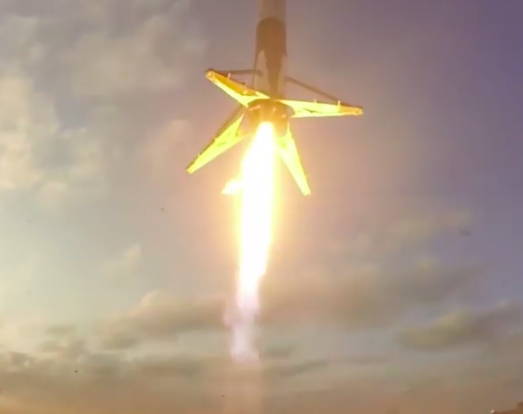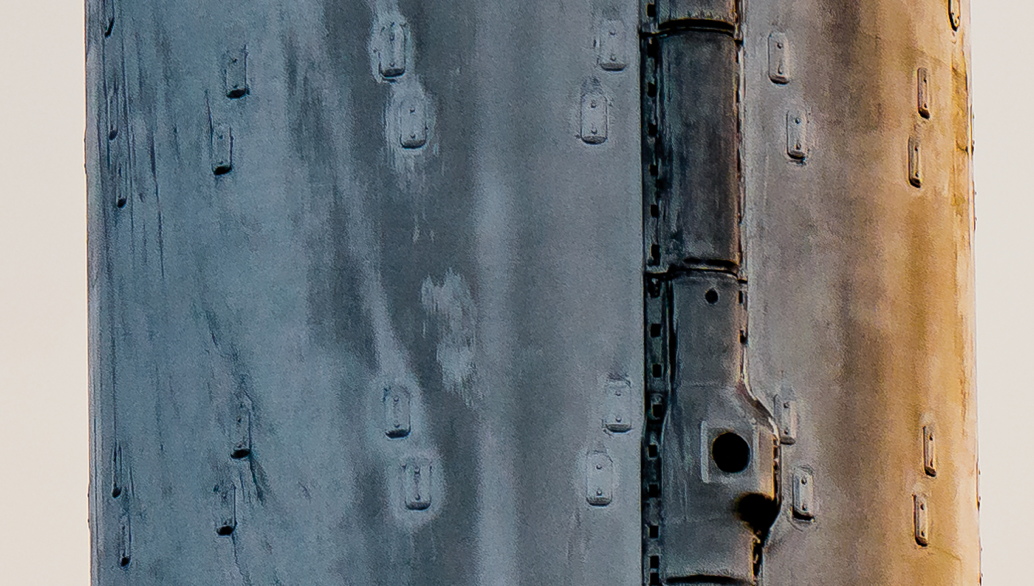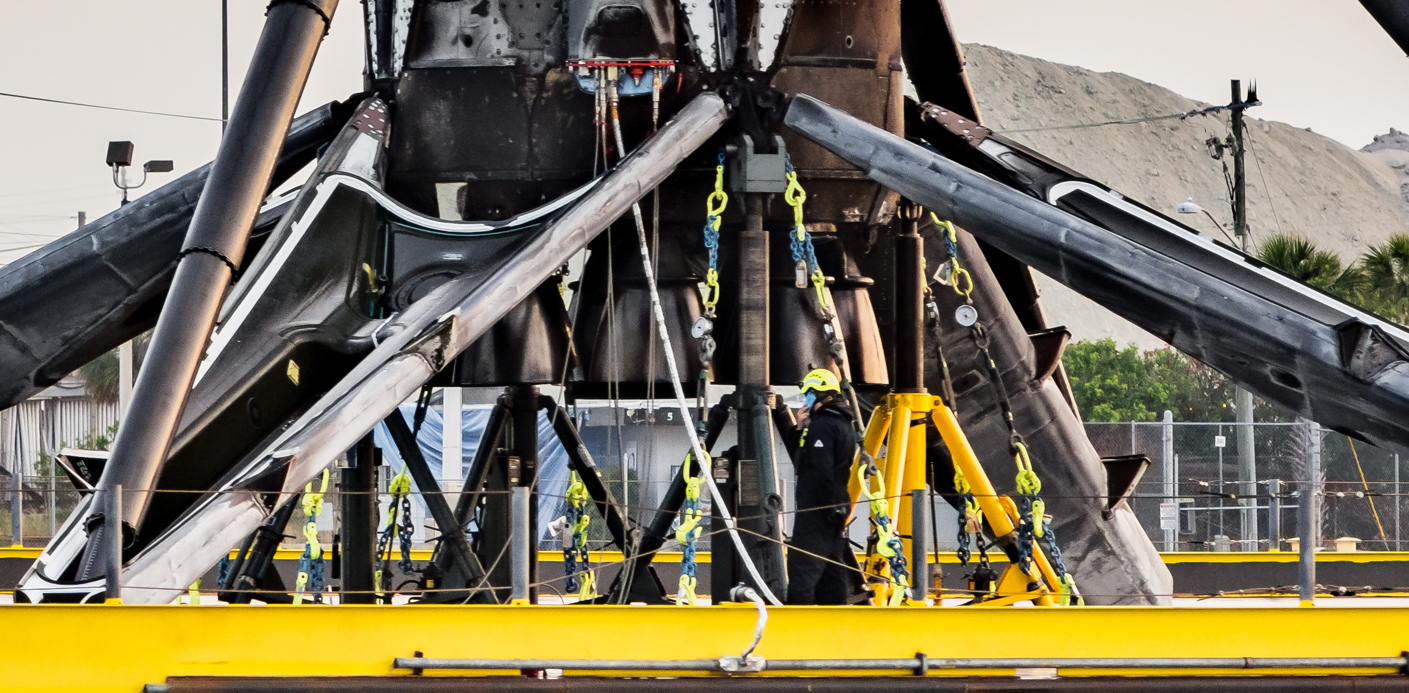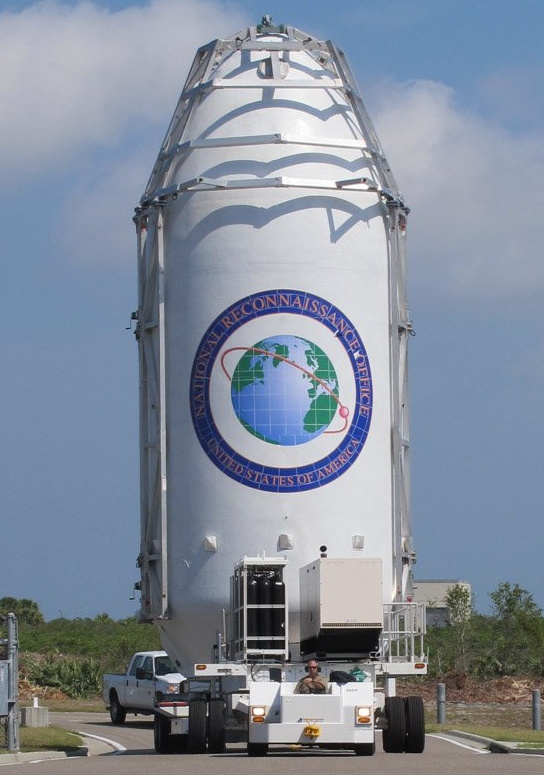A post from the Visual Satellite Observers mailing list
[email protected]:
NROL-76 payload speculation
The first Falcon 9 launch of an NRO satellite is scheduled for 2017 Apr 30 from KSC. A Falcon 9 v 1.2 will be employed.
Initially, this seemed likely to be a LEO mission, but I now suspect that the payload is built on Boeing's BSS-702SP bus, headed for GEO. The mission may be similar to that of PAN and CLIO, aka Nemesis 1 and 2.
1. Possible LEO missions
The Falcon 9 first stage will return to the launch site (RTLS) instead of landing downrange on a barge. To-date, LEO launches have targeted the first stage to RTLS and GTO missions have targeted barge landings; therefore, initial speculation was that the payload is headed to LEO.
A NOSS launch seemed a possibility until the present two week launch delay was announced, which will not result in a change of the launch period. NOSS windows typically are planar, opening 14 min/day earlier, which should have caused the launch period to change significantly.
Another possibility might be the re-flight of the experimental USA 193 payload of NROL-21. It was launched in Dec 2006 from VAFB aboard a Delta II rocket, into a 360 km, 58.5 deg orbit. USA 193 failed within seconds of reaching orbit. I doubt that ten years would be required to build another satellite, so that program may have been cancelled.
2. Possible GEO mission
A post on 2017 March 30 to the NROL-76 discussion on NSF, alerted me to the fact that the first stage of a Falcon 9 GTO launch could RTLS, given a payload sufficiently low in mass. And he had a specific payload in mind:
https://forum.nasaspaceflight.com/index.php?topic=40328.80
"I haven't done the maths, but I'm wondering if Falcon would, hypothetically, be able to return to the launch site following a GTO launch with a sufficiently light payload - such as a 2,000 kg 702SP."
Poster responded:
"Most likely, yes, RTLS is possible. The F9 upper stage can accelerate a 2,000 kg payload through about 1,300 m/s more dv than it can with a 5,300 kg payload like SES-10 which is just on the edge of ASDS recovery. Even a payload as large as 3500 kg could potentially RTLS."
That discussion reminded me that Gunter Krebs lists three US Government purchases of Boeing's BSS-702SP, all ordered in 2013:
https://space.skyrocket.de/doc_sat/hs-702.htm
More information on the purchase:
https://seradata.com/SSI/2014/03/bo...llites-from-a-mystery-us-government-customer/
While critics had pointed out that the rush of orders for "all electric" satellites that had been predicted had not really materialised as predicted, Jim Simpson, president of Boeing Satellite Systems International Inc., countered at the Satellite 2014 conference, by noting that three satellites using Boeing's all-electric BSS 702SP bus had actually been ordered in early 2013. He noted that they had been for a US Government customer but did not disclose the exact agency involved. It is assumed that the satellites, which use all-electric thrusters from propulsion, will be used for communications use.
That the U.S. government agency that purchased the three BSS-702SP has not been identified is reminiscent of PAN and CLIO, launched in 2009 and 2014, respectively. They are standard Lockheed Martin A-2100 communication satellites, procured by an unidentified U.S. government agency, in a package deal that included launch on Atlas V-401. The Lockheed Martin program name was P360.
Based on the following article, it appears that the Falcon 9 of NROL-76 was ordered in 2013 - the same year that the US government ordered the three BSS-702SP's. The NRO director stated in 2016, ?we?ve bought launches from SpaceX.? Note the plural.
https://spacenews.com/nro-discloses-previously-unannounced-launch-contract-for-spacex/
In 2013, Falcon 9 had yet to be qualified by the USAF to launch U.S. government security payloads. In 2014, SpaceX sued the USAF for having awarded a large EELV contract to ULA without a competition:
https://www.businessinsider.com/elon-musk-lawsuit-against-the-air-force-2014-4
So how could Falcon 9 have been procured in 2013 for an NRO payload? It could have been included in a package deal with Boeing for the BSS-702SP, similar to the earlier Lockheed Martin packages of its A-2100 CLIO and PAN with Atlas V-401.
It seems reasonable to assume that Boeing won a competition for the three payloads and launch vehicles. The low-cost Falcon 9 would have provided a competitive advantage. Assuming the contractor is paid only for delivery of a functioning payload to orbit, the only risk to the NRO of a payload or launch failure is a delay in its program.
Could a Falcon 9 stage 1 RTLS after launching a BSS-702SP to GTO? If the above comment by NSF poster envy887 is correct, a single BSS-702SP payload would be sufficiently low in mass to enable stage 1 to RTLS. Further to this, I obtained the following estimates using an online payload estimator:
https://www.silverbirdastronautics.com/LVperform.html
For RTLS, payload to GTO is estimated to be 2167 - 3534 kg, 95% confidence interval:
Launch Vehicle: Falcon 9 v1.2 (land recovery) w/standard fairing
Launch Site: Cape Canaveral / KSC
Destination Orbit: 36000 x 185 km, 27 deg
Estimated Payload: 2817 kg
95% Confidence Interval: 2167 - 3534 kg
Note: Caution: limited technical data available
Payload mass of the four BSS-702SP's for which Gunter Krebs listed information ranges between 1,954 kg and 2,300 kg, which falls within the 95% CI for RTLS recovery.
The reliability of the above estimate may be gauged by comparing the estimated and known payload mass for ocean barge landings:
Launch Vehicle: Falcon 9 v1.2 (ocean recovery) w/standard fairing
Launch Site: Cape Canaveral / KSC
Destination Orbit: 36000 x 185 km, 27 deg
Estimated Payload: 4664 kg
95% Confidence Interval:
3845 - 5570 kg
Note: Caution: limited technical data available
The Falcon 9 v 1.2 payload mass of missions that attempted a barge landing of stage 1 fall within the 95% CI of this estimate:
Mass, kg Stage 2 Orbit
2016 Mar 04 SES-9 5,271 325 x 40606 x 27.93
2016 May 06 JCSAT-14 4,696 177 x 35825 x 23.68
2016 May 27 Thaicom 8 3,025 374 x 90927 x 21.12
2016 Jun 15 Eutelsat 117W, ABS 2A ~4,000 390 x 62663 x 24.64 pair of BSS-702SP satellites
2016 Aug 14 JCSAT-16 4,600? 92 x 31609 x 20.94
2017 Mar 16 EchoStar 23 ~5,600 176 x 35834 x 22.44
2017 Mar 30 SES-10 5,300 235 x 33407 x 26.18
Payload mass is from Gunter Krebs' satellite tables; orbital data is from Jonathan McDowell's satellite catalogue.
The circumstantial evidence for the BSS-702SP appears to be fairly strong; however, I remain interested in alternative hypotheses. Corrections and additional information is welcome.










